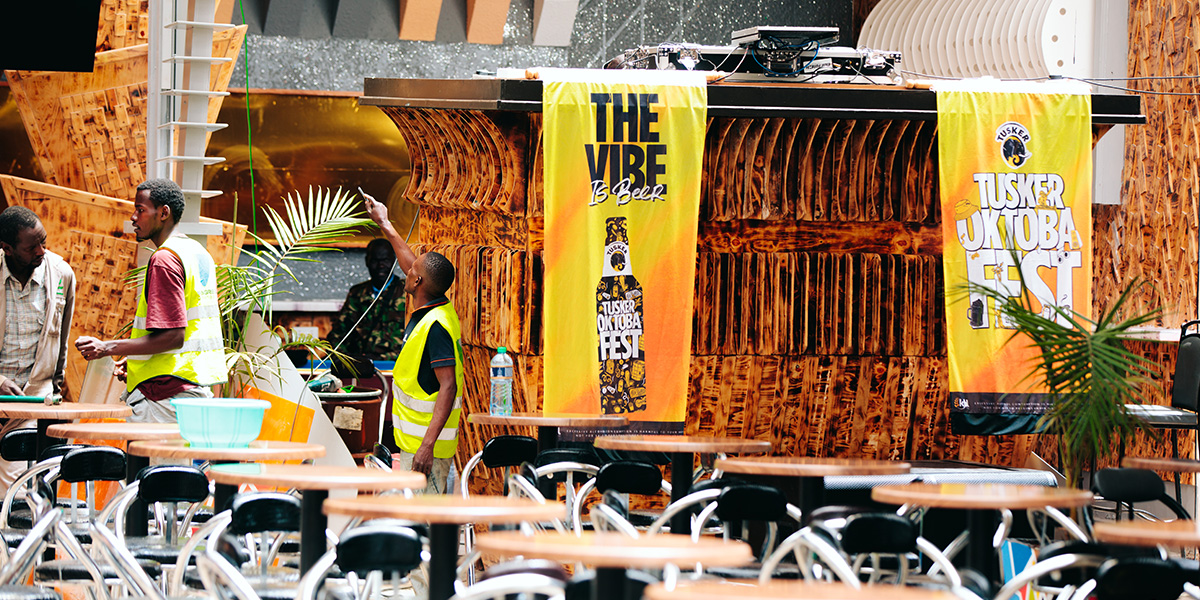In Nairobi and across East Africa, consumers are increasingly valuing how a brand makes them feel over just what the brand offers. With rising competition and savvy customers, emotional branding and vibe marketing are becoming essential tools for differentiation. Recent local movements—Tusker’s reimagined Oktobafest, Chrome Vodka’s refresh, and Uber’s new Safari service—illustrate how brands are building emotional currency.
What Are Vibe Marketing & Emotional Branding?
-
Vibe Marketing means crafting a holistic emotional ambience—mood, feeling, tone, culture—that surrounds your brand. It’s less about flashy features, more about the energy people associate with you.
-
Emotional Branding is using storytelling, visuals, music, values, and cultural signals to create strong, long-term emotional bonds. It’s about tapping into identity, memory, aspiration, nostalgia, etc.
Recent Nairobi / Kenya Case Studies
Tusker Oktobafest
-
Tusker’s 6th edition of Oktobafest has gone “nationwide” with a deconstructed model—bringing localized celebrations to regions across Kenya rather than one centralized event. This lets Tusker tailor vibe and culture for different audiences.
-
The Nairobi edition is being branded as “Kulture”—a nostalgia throwback to Kenyan music of the 2000s, both for millennials who lived it and for Gen Z discovering it. That emotional tie to heritage gives the festival deeper meaning.
Chrome Vodka / Chrome Gin (KBL)
-
KBL recently redesigned the packaging for Chrome Vodka and Chrome Gin to reflect local trend, culture, art, and urban youthful energy. The new look aligns with the streets, music, and flair of Nairobi’s youth culture.
-
One strategy was making premium spirits feel accessible—so the product feels high-quality, stylish, but still within reach. In some cases, prices were adjusted (or promotions offered) to match economic realities.
Uber Safari
-
Most recently, Uber expanded its service into the tourism realm with Uber Safari—allowing users to book day or night guided safaris into Nairobi National Park through its app. This move connects urban dwellers and visitors with Kenya’s wildlife heritage in a branded, emotional way. It’s not just transport—but an experience that evokes wonder, identity, connection to nature.
Pros of Vibe Marketing & Emotional Branding
Benefit |
How It Shows up Locally |
|---|---|
Deeper Emotional Connection |
Nostalgia from Tusker’s “Kulture” draws on memories & shared culture. Chrome’s street art cues hit youth identity. |
Differentiation |
Uber isn’t just “ride-hailing” any more—“Safari” mode gives it a unique offer amid many transport apps. |
Stronger Community Engagement |
Local artists, small vendors, service providers benefit from Tusker’s regional festivals. Chrome’s brand events bring together creatives. |
Cultural Relevance & Authenticity |
Brand packaging, events, collaborations that reflect local music, art, heritage resonate more than copied foreign vibes. |
Cons, Challenges & Risks
Challenge |
Potential Risks |
|---|---|
Authenticity Misfires |
If nostalgia is shallow, or you just “borrow” cultural elements superficially, audiences will call it out. E.g., nostalgia without substance can feel like a gimmick. |
Consistency |
Maintaining the same vibe across all touchpoints (events, packaging, digital ads, product experience) is hard. Chrome may refresh packaging, but if taste, price, or messaging don’t align, the brand vibe suffers. |
Costs & Resource Intensity |
Curating events (like Oktobafest), redesigning packaging, organizing creative activations—all need investment. Smaller brands may struggle. |
Audience Fragmentation |
Kenyan consumers are diverse—what resonates in Nairobi might not in Mombasa, Kisumu, or rural areas. Vibe that’s highly urban might alienate others. |
Measuring ROI |
Emotional engagement, brand vibes are harder to quantify. Which metrics truly capture long-term emotional loyalty vs. immediate sales? |
Opportunities in the Local Market
-
Hyper-Local Vibes: Events or activations that lean into Nairobi’s unique neighborhoods (Westlands, Kibra, Eastlands) or to Kiambu / Ruiru area culture.
-
Cross-Cultural Storytelling: Mixing traditional Kenyan / East African heritage (music, fashion, language) with modern aesthetics to build bridges across generations (millennials and Gen Z).
-
Collaborations with Creatives: Street artists, fashion designers, DJs etc. Chrome’s Street Filosofia and Tusker’s inclusion of local talent are good models.
-
Digital & Social Storytelling: Use short video, reels, behind-the-scenes, nostalgic content to evoke emotion. Participatory content (ask audience to share memories) builds vibe.
-
Accessible Luxury: Premium look & feel, but with pricing or promotions that make it feel inclusive. Chrome Vodka’s pricing and package redesign are good examples.
-
Experience Extensions: Uber Safari shows how a brand can stretch its identity into experiences that evoke feelings and memories, not just service transactions.
Problems That Need Solving
-
Vibe Dilution Over Expansion: As brands grow, scaling while keeping the core emotional identity intact is hard. Tusker might lose vibe if regional variants diverge too much.
-
Economic Pressure & Value Perception: Consumers sensitive to price; vibes won’t make up for poor value. Chrome reducing prices in festive seasons shows recognizing this. Kenyans
-
Regulatory / Cultural Sensitivities: Alcohol brands like Chrome have additional regulations and cultural norms. Messaging must be mindful of what’s acceptable.
-
Overemphasis on Surface Over Substance: If the vibe is just aesthetic (packaging, visuals) but the product or service experience lags, trust erodes.
Solution Strategies & Capabilities for Brands in Nairobi
Here are strategic levers brands can use to build, maintain, and scale emotional branding & vibe marketing effectively in Nairobi / East Africa:
-
Define & Document Your Vibe & Values
-
Create a “Brand Vibe Guideline”—tone of voice, visual cues, cultural references, music styles, aspirational values.
-
Ensure internal teams (marketing, design, packaging, events) share and align on this.
-
-
Local Audiences First
-
Use market research & social listening in Nairobi and surrounding counties to understand what emotions, nostalgia, culture people respond to.
-
Prototype in smaller market areas before rolling out widely.
-
-
Authentic Storytelling
-
Use real stories: local artists, heritage, community history. Tusker’s use of 2000s Kenyan music (artists’ origins, connections) is an example.
-
Celebrate the real, not contrived.
-
-
Consistent Multi-Touchpoint Experience
-
Packaging (Chrome’s redesign) should match digital ads, events, product experience.
-
Packaging signals vibe even before purchase. Chrome’s new bottle look signals street culture + premium.
-
-
Flexible & Inclusive Pricing / Promotions
-
Offer deals during key cultural moments or festivals to make premium brands more accessible.
-
Use flash sales, price reductions or bundled offerings. Chrome’s price reductions and Tusker’s regional promotions are relevant.
-
-
Measure Both Sentiment & Behavior
-
Track engagement (social shares, UGC, sentiment) and conversion (sales, retention).
-
Use tools like brand sentiment analytics, surveys, online reviews.
-
-
Experiential Extensions
-
Create events, immersive experiences, partnerships (like Uber Safari) that let people live the brand.
-
Use limited-edition products or collaborations that generate emotional buzz.
-
Conclusion
For brands in Nairobi and beyond, vibe marketing and emotional branding are no longer optional—they’re essential. When done well, they build loyalty, differentiate, and connect powerfully with people’s identities. But the risks are real: authenticity, consistency, value perception—all must be managed.
By learning from locals like Tusker Oktobafest (bringing nostalgia and culture back), Chrome Vodka (accessible premium with street identity), and Uber Safari (transforming service into an emotional experience), your brand can create a vibe that resonates, not just sells. Contact us for your next event and experience exceptional branding and marketing expertise!

